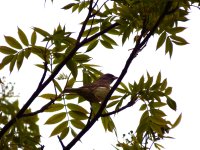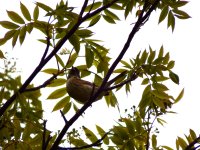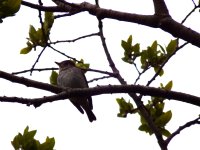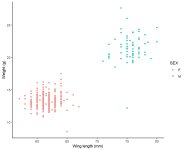Ross Thompson
Member

Hello everyone
I've just com back from some birdwatching at the Otatomarinuma Swamps on Rishiri Island, Hokkaido (a really interesting place, btw - got my first Japanese Robin and a vagrant Taiga Flycatcher). I have a few identification questions though.
Pictures 1 and 2 - There were a lot of Masked Buntings around. However, are these photos of a Black-faced Bunting, perhaps? I note the lack of any yellow 'bid'. I know they are not common in Japan, but Rishiri is something of a migrant trap.
Pictures 3 and 4 - This is some kind of Flycatcher, and I am provisionally going for Grey-streaked Flycatcher. However, both Dark-sided and Asian Brown Flycatchers are not impossible either.
Picture 5 - Probably this is a Japanese Bush Warbler. However, it was quite a bit bigger than other JBWs I've seen and, due to the area, I was thinking a Sakhalin Grasshopper Warbler might also be a possibility.
Any help would be appreciated.
Many thanks,
Ross
I've just com back from some birdwatching at the Otatomarinuma Swamps on Rishiri Island, Hokkaido (a really interesting place, btw - got my first Japanese Robin and a vagrant Taiga Flycatcher). I have a few identification questions though.
Pictures 1 and 2 - There were a lot of Masked Buntings around. However, are these photos of a Black-faced Bunting, perhaps? I note the lack of any yellow 'bid'. I know they are not common in Japan, but Rishiri is something of a migrant trap.
Pictures 3 and 4 - This is some kind of Flycatcher, and I am provisionally going for Grey-streaked Flycatcher. However, both Dark-sided and Asian Brown Flycatchers are not impossible either.
Picture 5 - Probably this is a Japanese Bush Warbler. However, it was quite a bit bigger than other JBWs I've seen and, due to the area, I was thinking a Sakhalin Grasshopper Warbler might also be a possibility.
Any help would be appreciated.
Many thanks,
Ross










